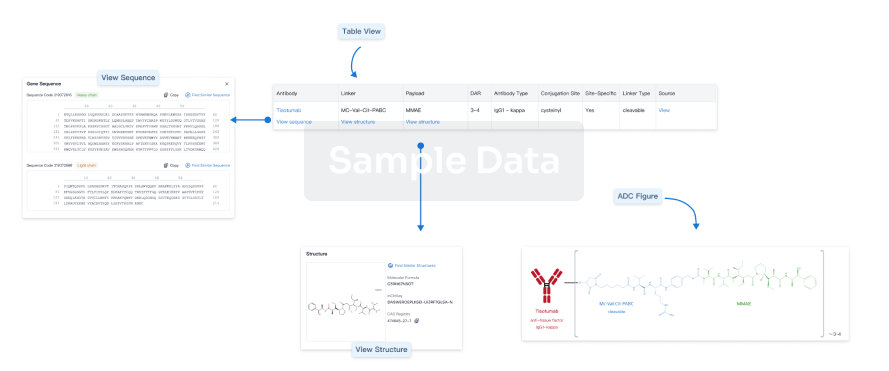Request Demo
Last update 10 Dec 2025
Legubicin
Last update 10 Dec 2025
Overview
Basic Info
Drug Type Small molecule-drug conjugates |
Synonyms A novel conjugate of doxorubicin and a legumain-cleavable peptide linker(Affinity), TMEA-ALDC, QHL-108 |
Target |
Action inhibitors |
Mechanism DNA intercalators, Top II inhibitors(Topoisomerase II inhibitors) |
Therapeutic Areas |
Active Indication |
Inactive Indication- |
Originator Organization |
Active Organization |
Inactive Organization- |
License Organization- |
Drug Highest PhasePhase 3 |
First Approval Date- |
Regulation- |
Login to view timeline
Structure/Sequence
Molecular FormulaC48H64N6O18 |
InChIKeyMXJIXMIBWBRASS-UGZZBAIUSA-N |
CAS Registry606967-53-7 |
Boost your research with our ADC technology data.
login
or

Sequence Code 2117244

R&D Status
10 top R&D records. to view more data
Login
| Indication | Highest Phase | Country/Location | Organization | Date |
|---|---|---|---|---|
| Soft Tissue Sarcoma | Phase 3 | - | - | |
| Carcinosarcoma | Phase 2 | China | 14 Jul 2025 | |
| Choriocarcinoma | Phase 2 | China | 14 Jul 2025 | |
| Endometrioid Carcinoma | Phase 2 | China | 14 Jul 2025 | |
| Fallopian Tube Carcinoma | Phase 2 | China | 14 Jul 2025 | |
| Ovarian Epithelial Carcinoma | Phase 2 | China | 14 Jul 2025 | |
| Primary peritoneal carcinoma | Phase 2 | China | 14 Jul 2025 | |
| Non-squamous non-small cell lung cancer | Phase 2 | China | 20 Mar 2025 | |
| Squamous non-small cell lung cancer | Phase 2 | China | 20 Mar 2025 | |
| Adenocarcinoma of Lung | Phase 2 | - | - |
Login to view more data
Clinical Result
Clinical Result
Indication
Phase
Evaluation
View All Results
CTR20212527 (ESMO2025) Manual | Phase 2/3 | Soft Tissue Sarcoma First line | 306 | iztolxakhn(zirxiuxejb) = hyrooeuahx ultpsyorhk (blgsubiiyk ) View more | Positive | 19 Oct 2025 | |
iztolxakhn(zirxiuxejb) = yefwztrnla ultpsyorhk (blgsubiiyk ) View more |
Login to view more data
Translational Medicine
Boost your research with our translational medicine data.
login
or

Deal
Boost your decision using our deal data.
login
or

Core Patent
Boost your research with our Core Patent data.
login
or

Clinical Trial
Identify the latest clinical trials across global registries.
login
or

Approval
Accelerate your research with the latest regulatory approval information.
login
or

Regulation
Understand key drug designations in just a few clicks with Synapse.
login
or

AI Agents Built for Biopharma Breakthroughs
Accelerate discovery. Empower decisions. Transform outcomes.
Get started for free today!
Accelerate Strategic R&D decision making with Synapse, PatSnap’s AI-powered Connected Innovation Intelligence Platform Built for Life Sciences Professionals.
Start your data trial now!
Synapse data is also accessible to external entities via APIs or data packages. Empower better decisions with the latest in pharmaceutical intelligence.
Bio
Bio Sequences Search & Analysis
Sign up for free
Chemical
Chemical Structures Search & Analysis
Sign up for free
